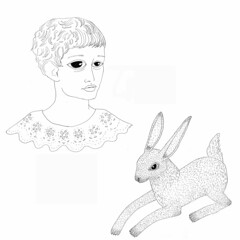I've been sick and busy, and sick of being busy, still with the three ginormous papers hanging over my head, reaching down occasionaly to slap me on the side of my head, near the ear, where it hurts.
Here's a little thing:
Excerpted from an Encyclopedia of Nocturnal Marsupials
This tiny bearole (in the photo, no larger than a child’s wooden leg) is difficult to take on walks. Excessively restless, it often jumps out of its stall. Bars can sometimes limit the activities of this tiny animal. Sometimes the beast can be tied down. Urban dwellers prefer the tiny marsupials that are produced in plastic factories. Often manufactured without head or limbs, these beasts are quite docile. All the marsupials are available in different skin tones.
Bearoles are rarely seen in the wild. When spotted, they tend to make short sharp cries and scamper like spiders over blades of quivering grass. On at least two occasions, weak and dehydrated wild bearoles have been found stuck to a tree trunk by clots of rotting honey. This tiny beast is addicted to honey, up to and including its sticky death. For this reason, Dr. Geertzmantal, the Swedish botanist who accidentally discovered the bearole, was thought to have named the tiny animal after a bear, although some ethnographers insist the name comes from its enormous bear-like paws. The road to obtaining an official Latin name is a long one -- filled with pitfalls and hurdles. The bearole’s constant escapes have not endeared it to the Latin name-makers, with their dust allergies and fear of large plants. Rumors that the bearole tongue delivers a hallucinatory poison have never been substantiated.

No comments:
Post a Comment